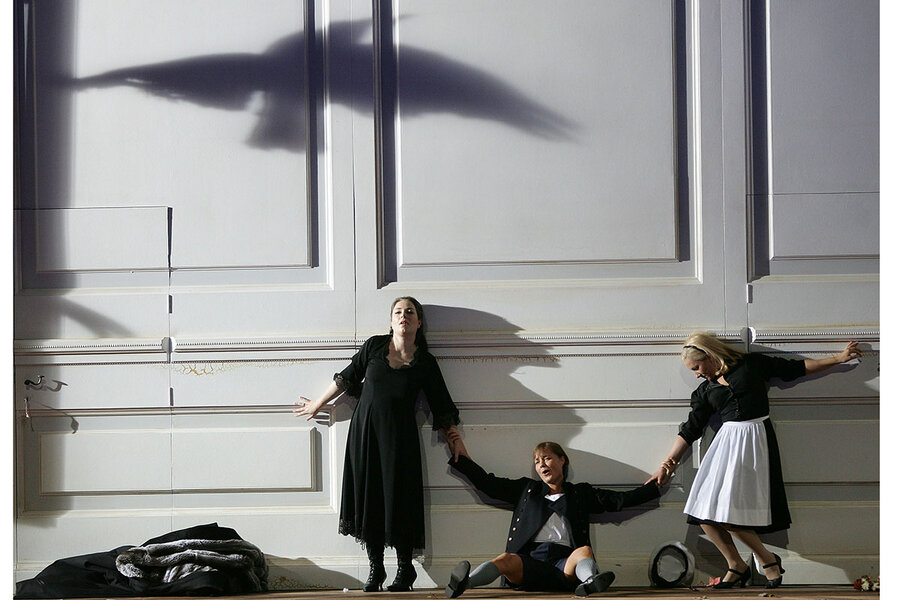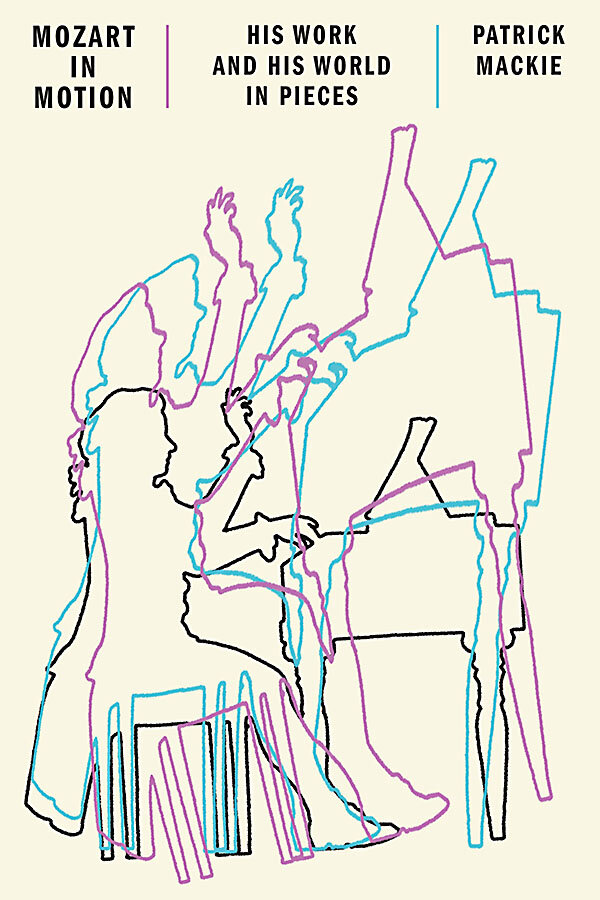How the changing world affected Mozart’s music, piece by piece
Loading...
It must have been difficult to be Wolfgang Mozart. He lived a peripatetic life and rarely stayed in the same house for more than a year. He had a deeply troubled relationship with his controlling father. He never had much money but was expected to mingle comfortably with high-born and wealthy patrons who provided commissions and financial support. And, of course, he had to write music that pleased his benefactors while simultaneously satisfying his own musical vision.
Patrick Mackie, a poet and social critic, has written an engaging biography, “Mozart in Motion: His Work and His World in Pieces,” that seeks to understand how Mozart’s circumstances and the rapidly changing world in which he lived shaped his compositions. It is a story of an extraordinary musical genius who overcame every obstacle that life set before him.
The book is organized around a series of 25 essays in which he analyzes specific pieces of music. While the book makes it easy to follow the arc of Mozart’s life and to appreciate his personality, this is not a conventional biography. Readers favoring a more traditional approach may wish to pick up Cliff Eisen’s updated edition of Hermann Abert’s “W.A. Mozart.” Nor does “Mozart in Motion” read as if it was written for classical music scholars. But in the end, the book’s subtitle “His Work and His World in Pieces” provides a superb summary of what Mackie intends.
Mozart’s frequent travels created a “peculiar mixture of scratching out an almost hand-to-mouth existence and enjoying luxurious access to the highest circles of politics and culture,” the author writes. But this nomadic existence exposed him to a wide array of musical influences and Mackie concludes that such a life, coupled with his musical genius, gave Mozart an unparalleled ability to capture the diverse musical traditions of the time. The composer simultaneously moved beyond those traditions in a way that challenged listeners and opened up amazing musical possibilities.
It was not always a smooth or easy process. During his 1778 residence in Paris, Mozart received glowing public acclaim for his Symphony No. 31 in D, the so called “Paris” symphony. But to Mackie, the more important work from this period was probably the Piano Sonata in A Minor, which is “stridently original and expressive.” But his musical genius was not always rewarded: the Sonata in A was so original that it did not find a publisher.
Mackie sympathizes with the audience trying to appreciate such innovative music: “Let us imagine what it would have meant for someone in the Paris of the late 1770s to be faced with this music,” he writes. “The effect must have been gripping and disorienting; it can seem at once almost confrontationally solid in its sense of formal sureness and at the same time recklessly fluid and mutable.”
Many of Mozart’s best-known compositions are singled out for chapter length examination. To name just a few: the Piano Sonatas in C, A, and F that were published in 1784; the Haydn Quartets that honored the older composer and moved beyond what he had accomplished; the great, though unfinished, Mass in C Minor; the three symphonic masterpieces composed in the summer of 1788; the incomparable operas “Marriage of Figaro” and “Don Giovanni.”
Most of the attention is on works created in the last decade of Mozart’s life, when he largely lived in Vienna – although in many different residences. Mackie’s analysis goes to some lengths to emphasize the political and social milieu of the city and the already apparent shakiness of the Hapsburg Empire. Some of the book’s most fascinating biographical details come from this period. When analyzing the Sinfonia Concertante in E flat, Mackie tells us that Mozart and Joseph Haydn found themselves in Vienna at the same time, the pair often played together in string quartets. When they did, Haydn played the violin and Mozart favored the viola. One can only wish for a recording of the music they played together.
As with any great music, Mozart’s was the product of old and new compositional ideas, professional demands, and personal interests. All of these elements feature prominently in the story Mackie tells. But the author contends that Mozart’s music may have been even more powerfully influenced by the rapid social and political developments – most notably the French Revolution and the Enlightenment – that were fundamentally altering the contours of European civilization. So Johann Wolfgang von Goethe, Denis Diderot, Immanuel Kant, and Jean-Jacques Rousseau all find their way into the story.
In the end, the emergence of the modern world is the theme that Mackie comes back to most frequently in explaining Mozart’s transcendent genius. He writes: “At the core of Mozart’s work is the attempt to reckon with the coming of the modern world, and the point of modernity is that it will be full of questions, about itself and everything it contains or touches. ... New visions of culture based on innovation and change were taking shape all around him. In fact, he was shaping them more deeply and playfully than anyone.”
Mackie’s insights range far and wide and, at times, seem a little too far afield. It is a safe assumption that not many books on Mozart include references to Beau Brummell and Henry Ford as well as digressions on the music of Prince and the Sex Pistols.
Nonetheless Mackie’s extraordinary knowledge, thoughtful insights, and exemplary prose make the book insightful, thought provoking, and enjoyable. Reading the essays is like attending a concert with a friend who is exceptionally well-read and articulate. Rare is the reader who will digest these essays without immediately wanting to listen to whatever piece of music has just been examined.







